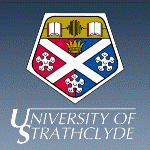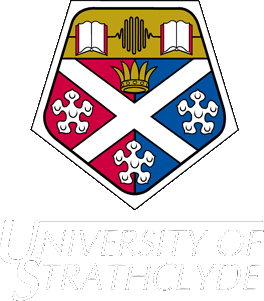| Case
Study Process |
Introduction
In an effort to decide on a suitable site for our case study, we undertook a search for favourable sites along the Scottish west coast, keeping in mind the site selection criterion outlined by the DTI 2005 marine resource report. We found the sound of Islay, a constricted channel between the western Isles of Islay and Jura an interesting location.
Firstly, due to the site's orography and considerable constriction from approximately 5.5 km channel widths at the northern and southern headlands, to a channel mid section of less than 850m at Port Askaig. This constriction accelerates surface mean spring velocities to in excess of 5 knots (Approx 2.57m/s). This high flow rate is also accompanied by a deep flat mid section of the channel, typically greater than 30m deep, with depths of up to 60m. The channel is surrounded by mountains and is thus sheltered from wind and wave mixing effects on the tidal flow, ideal for energy generation. This site is significantly far from any estuaries, islands or large tidal flow (Irish Sea) regimes ensuring that the tidal flow approximates a sinusoidal profile with no tidal harmonics or flow anomalies, though the ebb can be significantly slower. The available tidal date from Port Askaig and Rubha A'mhail verify this and would enable further tidal analysis and velocity calculations.
Further investigation found no immediate reason why, initially, a tidal farm might violate local authority or MoD planning regulations. There are some small scale fisheries along the eastern shore and a ferry route, bridging the channel. There is no indication that the channel is used further for shipping, other than small vessel, leisure boating activities.
Methodology
The full application of the resource and technology matching methodology can be seen in context on the next page, but a brief overview to help familiarise a developer with its workings shall follow.
A site specific investigation is first conducted to ascertain the tidal regime of a particular site, once chosen. The flow conditions and velocity depend inherently on the specific topography of the site, as turbulence and shear flow is generated. By mapping the cross sections of interest and facilitating a means of inputting local differences in roughness into the models, velocity distributions and shear flow can be calculated and depicted visually. Thus the most likely optimum device positions can be selected.
With tidal velocity calculated and cross sections mapped, device deployment combinations can be explored, by utilising conservative lateral spacing as a function of device diameter or similar. At this point the locating of the devices in the channel cross sections can be physically explored through the use of Computer Aided Design software. It may be the case that due to depth limitations, surface and bottom boundary layers, and shear, the amount of turbines that can be placed in each cross section will be considerably less than anticipated. After a suitable exploration has been completed, using different numbers of different sizes of different technology options, the yearly power capture and SIF for each combination can be calculated. If a limit for SIF is imposed, say 10% as recommended, then deployment will be constrained by whichever threshold is reached first – space or SIF.
Each technology, depending on its mode of operation will tend
to affect SIF and packing densities in differing ways, meaning
that the most pertinent information for deciding which to ultimately
choose will depend on the costs of each. This in turn is likely
to change as they reach technological maturity, and the model
should be updated as new economic information comes to light.
| Case
Study Process |
Go back to Contents

 Home
Home 
